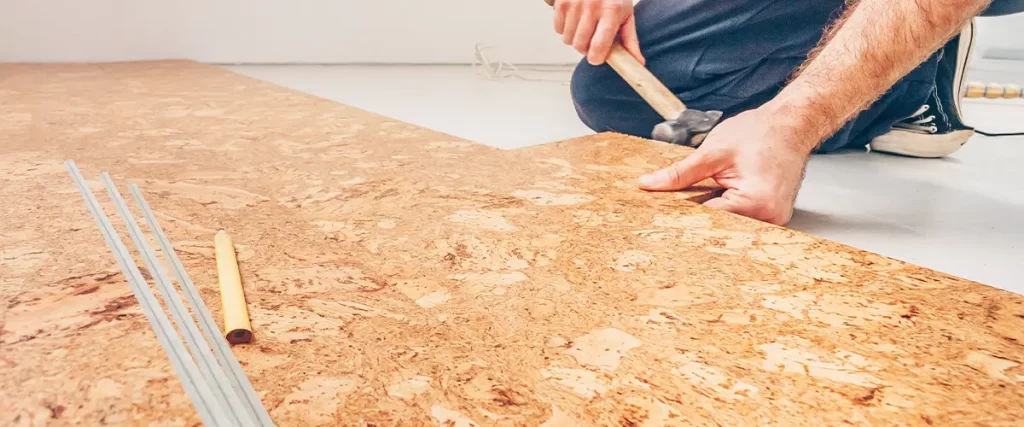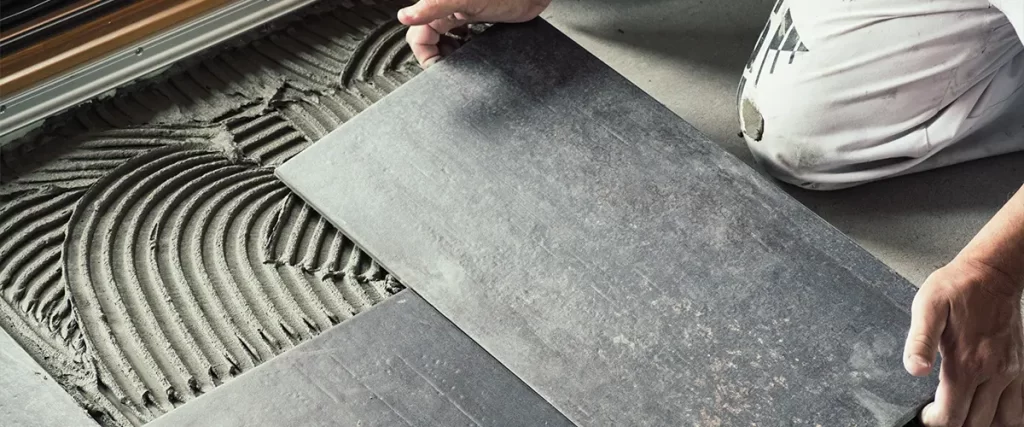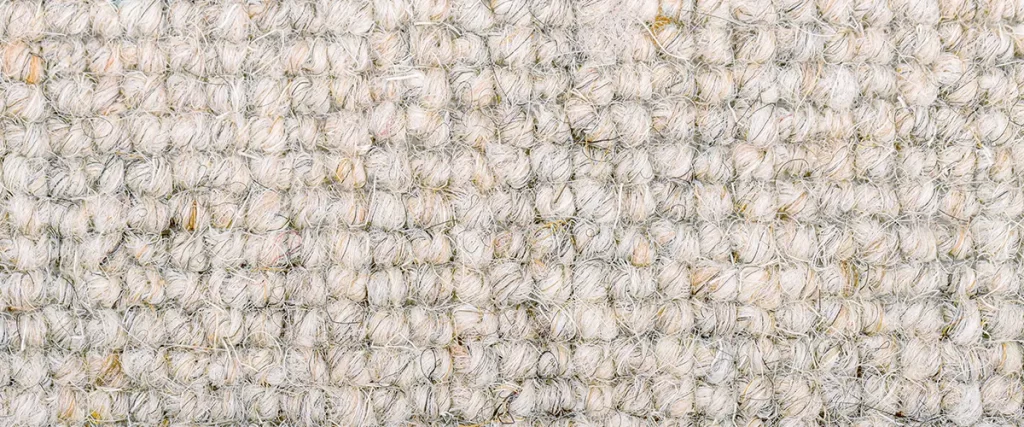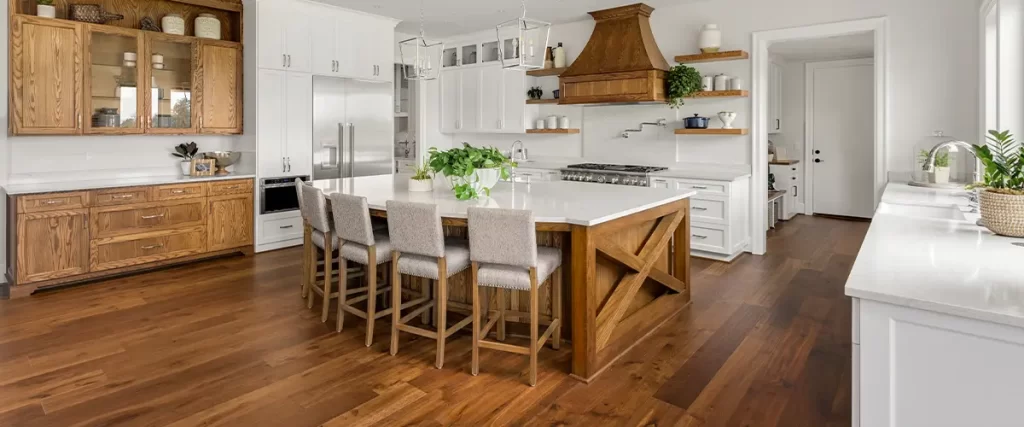In an era where environmental consciousness is no longer a niche concern but a guiding principle for many, the choices we make for our homes carry significant weight. From the paint on our walls to the furniture we select, every decision presents an opportunity to align our living spaces with our values.
Flooring, a fundamental element of any interior, is no exception. Choosing eco-friendly flooring is not just about aesthetics; it’s about investing in healthier indoor air quality, supporting sustainable practices, and minimizing our environmental footprint.
This comprehensive guide delves into the best eco-friendly flooring options available today, exploring their unique characteristics, environmental benefits, durability, style versatility, and factors to consider when making your selection.
Whether you’re renovating your entire home or simply replacing a worn-out floor, understanding these sustainable alternatives will empower you to make an informed and environmentally responsible choice.

Defining Eco-Friendly Flooring
Before we dive into specific materials, it’s crucial to define what constitutes “eco-friendly” flooring. Generally, sustainable flooring options share several key characteristics:
Eco-friendly flooring focuses on sustainability and health by incorporating several key principles. Materials often come from rapidly renewable resources like bamboo or cork, reclaimed wood, or those with high recycled content, such as recycled rubber or glass tiles.
These options also prioritize low or zero VOC emissions, minimizing harmful chemicals that can impact indoor air quality and human health. Sustainable manufacturing processes play a crucial role, with companies reducing energy use, water consumption, and waste through responsible sourcing and closed-loop systems.
Durability is another essential factor, as long-lasting products reduce the need for frequent replacements, lowering environmental impacts. Additionally, eco-friendly flooring considers end-of-life options, ensuring materials can be recycled, repurposed, or biodegrade to minimize landfill waste.
Top Eco-Friendly Flooring Choices:
Now, let’s explore some of the most popular and environmentally sound flooring options available:
1. Bamboo Flooring: The Rapidly Renewable Choice
Bamboo has emerged as a frontrunner in the eco-friendly flooring market due to its remarkable renewability. Unlike hardwood trees that take decades to mature, bamboo is a grass that can be harvested every 3-5 years.
This rapid growth rate makes it a highly sustainable alternative to traditional timber.Bamboo flooring offers several advantages, starting with its environmental benefits. With a fast growth cycle and minimal impact on forests, bamboo is a sustainable option that can be grown without the need for pesticides or herbicides.
In terms of durability, bamboo flooring varies in hardness based on the manufacturing process, with strand-woven bamboo being particularly durable—often surpassing the hardness of many traditional hardwoods.
It’s also highly versatile in style, available in a range of grains, colors, and finishes, including traditional vertical and horizontal grains and the durable, visually appealing strand-woven style that can mimic the look of hardwood.
However, there are important considerations to keep in mind. The quality of bamboo flooring can vary greatly between manufacturers, so it’s essential to choose products sourced from sustainably managed forests that use low-VOC adhesives.
Additionally, while durable, bamboo can be susceptible to scratches and dents depending on the type and finish, and its sensitivity to moisture is similar to that of hardwood.

2. Cork Flooring: The Naturally Resilient Option
Cork is harvested from the bark of cork oak trees without harming the tree itself. The bark regenerates over time, making cork1 a truly renewable resource. Cork forests also play a vital role in carbon sequestration and biodiversity conservation.
Cork flooring offers numerous benefits, making it an attractive option for many homes. Environmentally friendly, cork is a renewable resource harvested sustainably, contributes to carbon sequestration, and is biodegradable.
Its natural durability makes it resilient and shock-absorbent, providing comfort underfoot while being resistant to dents and scratches—perfect for high-traffic areas or homes with kids and pets.
Cork also offers style versatility, available in tiles and planks with various patterns and colors, delivering a warm and unique aesthetic.
However, there are considerations to keep in mind. Cork can be vulnerable to sharp objects and heavy furniture, requires proper sealing to prevent moisture damage, and may fade over time with prolonged sun exposure.

3. Linoleum Flooring: The Natural Comeback Kid
Often confused with vinyl (which is not an eco-friendly option), true linoleum is made from natural and renewable materials such as linseed oil, pine resin, wood flour, cork dust, and mineral fillers, all backed with a natural jute or canvas.
Linoleum flooring offers several advantages, starting with its environmental benefits as it is made from renewable resources, biodegradable, and emits low VOCs. It is also highly durable, resistant to scratches, stains, and water damage, while being naturally antibacterial and antistatic.
In terms of style, it provides versatility with a wide range of vibrant colors, patterns, and intricate designs that can suit both retro and contemporary aesthetics.
However, there are a few considerations to keep in mind. Linoleum can have a higher upfront cost compared to some alternatives and typically requires professional installation for the best results. Additionally, during renovations, older linoleum may contain asbestos, so proper testing and abatement are essential.
4. Reclaimed Wood Flooring: The Storyteller Underfoot
Reclaimed wood flooring is salvaged from old buildings, barns, factories, and even riverbeds. By giving these materials a new life, we reduce the demand for newly harvested timber, conserve natural resources, and add a unique character and history to our homes.
Reclaimed wood offers numerous advantages, starting with its environmental benefits, such as reducing deforestation, minimizing waste, and consuming less energy compared to producing new wood.
Its durability is another key feature, as reclaimed wood is often sourced from old-growth timber, making it denser, more durable, and capable of developing a beautiful patina over time. In terms of style, reclaimed wood is highly versatile, offering rustic, vintage, or industrial aesthetics, with each plank being unique and full of character.
However, there are some considerations to keep in mind. Reclaimed wood can be more expensive due to the labor-intensive process of sourcing and processing it, and its availability may vary. Additionally, it often comes with imperfections like nail holes, knots, and color variations, which add to its charm but may not suit everyone’s preferences.
5. Recycled Content Flooring: Giving Waste a New Purpose
Several flooring options incorporate recycled materials, diverting waste from landfills and reducing the need for virgin resources.
Recycled materials offer a sustainable and versatile option for flooring and tiles, combining durability with environmental benefits. Recycled rubber flooring, made from old tires or rubber products, is highly durable, shock-absorbent, and slip-resistant, making it perfect for gyms, playrooms, and utility spaces.
Recycled glass tiles, crafted from post-consumer or industrial glass waste, provide a unique and stylish look, ideal for kitchens and bathrooms. Similarly, reclaimed tiles salvaged from old buildings add character while reducing waste.
These materials help lower landfill waste, conserve virgin resources, and require less energy in manufacturing compared to new materials.
Durability varies, with recycled rubber being extremely resilient and recycled glass tiles offering durability with some susceptibility to chipping. Style options also range widely, with recycled rubber offering a utilitarian look and recycled glass being highly decorative.
However, availability, cost, and aesthetic appeal may vary depending on the material and individual preferences.

6. Natural Stone and Ceramic Tile: Durable and Earth-Friendly (with caveats)
Natural stone (like slate, granite, and marble) and ceramic tiles are inherently durable and long-lasting materials. When sourced responsibly and installed with eco-friendly mortars and grouts, they can be considered sustainable options.
Natural stone and ceramic tiles offer numerous benefits, including environmental advantages due to their long lifespan, which reduces the need for frequent replacements. As naturally occurring materials, natural stone is both durable and resistant to scratches, stains, and water damage, making it ideal for high-traffic areas and bathrooms.
These materials also provide style versatility, with a wide range of colors, textures, and finishes to suit any design aesthetic, from rustic to modern. However, there are considerations to keep in mind.
The extraction and processing of natural stone can be energy-intensive, with potential environmental impacts, so it’s important to choose suppliers with responsible sourcing practices.
Similarly, ceramic tile production requires significant energy, and considering the embodied energy of these materials is crucial. Opting for locally sourced options can reduce the environmental footprint. Additionally, installation involves the use of mortars and grouts, so selecting low-VOC products is recommended for a more sustainable choice.

7. Wool Carpeting: A Natural and Renewable Soft Option
Made from the fleece of sheep, wool is a natural, renewable, and biodegradable fiber. When produced sustainably, wool carpets can be an eco-friendly choice for adding warmth and comfort to your home.
Wool carpets offer several benefits, making them a popular choice for both style and sustainability. They provide environmental advantages as a renewable resource that is biodegradable, naturally flame-resistant, and capable of improving indoor air quality by trapping allergens.
Wool is also highly durable, naturally resilient, and able to withstand heavy foot traffic, ensuring long-lasting performance. In terms of style, wool carpets come in a wide range of textures, colors, and patterns, offering a luxurious and comfortable feel.
However, there are some considerations to keep in mind. Wool carpets can be more expensive than synthetic options and require proper maintenance to prevent staining and moth damage. For the best results, choose wool carpets with natural backings like jute and low-VOC dyes for a healthier, more sustainable option.
Best Wool Carpet Manufacturers
When selecting a wool carpet, choosing reputable manufacturers ensures high-quality, sustainable, and stylish options that meet your needs.
- Karastan: Known for their premium craftsmanship and timeless designs, Karastan offers a wide range of luxurious wool carpets.
- Godfrey Hirst: Offers durable, eco-friendly wool carpets in diverse styles, perfect for both residential and commercial spaces.
- Glen Eden Wool Carpet: Creates handmade wool carpets using natural materials, emphasizing beauty, quality, and eco-conscious manufacturing.
Factors to Consider When Choosing Eco-Friendly Flooring:
Beyond the material itself, several other factors contribute to the overall environmental impact of your flooring choice:
- Manufacturing Process: Research the manufacturer’s sustainability practices, including energy efficiency, waste reduction, and responsible sourcing. Look for certifications like FloorScore or GreenGuard.
- Transportation: Consider the distance the flooring needs to travel. Choosing locally sourced materials can reduce the carbon footprint associated with transportation.
- Installation: Opt for low-VOC adhesives, sealants, and finishes. Consider the waste generated during installation and choose installers who prioritize recycling and responsible disposal.
- Maintenance: Choose flooring that is easy to clean and maintain with non-toxic products. Proper maintenance will extend the lifespan of your floor, reducing the need for replacement.
- End-of-Life Disposal: Consider whether the flooring can be recycled, repurposed, or will biodegrade at the end of its useful life.
Frequently Asked Questions
What are the best eco-friendly flooring options available?
There are plenty of great eco-friendly flooring options to choose from, depending on your needs and style. Popular choices include bamboo flooring, cork flooring, reclaimed wood, and linoleum flooring made with natural materials like linseed oil and wood flour.
These options are not only beautiful and durable floors but also sustainable and offer a lower carbon footprint compared to traditional flooring materials.
Is hardwood flooring considered an eco-friendly choice?
Traditional hardwood flooring can be eco-friendly if it is sourced responsibly. Look for certified sustainable hardwood floors, such as those approved by the Forest Stewardship Council (FSC).
Reclaimed hardwood is another excellent sustainable flooring choice, as it uses wood from old buildings or other structures, reducing the demand for newly harvested raw materials.
What is the cost of eco-friendly flooring per square foot?
The cost varies widely depending on the material. For instance, cork flooring or bamboo flooring might range from $3 to $12 per square foot, while more premium options like reclaimed hardwood or stone floors can go higher.
The best way to determine your budget is by comparing different flooring materials and considering the long-term durability and benefits they provide.
How can I reduce the carbon footprint of my flooring?
Opting for renewable materials like bamboo or cork, recycled materials like recycled glass tiles or recycled plastic bottles, and sustainable flooring choices, such as engineered bamboo or reclaimed wood, can help lower your flooring’s carbon footprint.
Additionally, choosing flooring with sustainable manufacturing processes, like wool carpet or eco-friendly rubber flooring, minimizes the environmental impact over time.
Are there eco-friendly flooring options that improve indoor air quality?
Yes, some flooring materials contribute to better indoor air quality by emitting fewer volatile organic compounds (VOCs). For example, cork, linoleum, wool carpets, and FSC-certified hardwood are known for being low-VOC options.
Proper maintenance with non-toxic cleaning products also helps maintain the air quality in your home.
What should I know about installing eco-friendly flooring?
Some eco-friendly flooring options are easier to install than others. For instance, engineered wood and luxury vinyl tiles often come in planks or tiles that can be installed with a click-and-lock system.
Other options, like concrete flooring or cork, may require professional installation to ensure they are properly set and last a long time. Always use eco-friendly adhesives during the installation process to reduce toxic chemical emissions.
Are these flooring options durable?
Many eco-friendly materials like bamboo flooring, cork, concrete slabs, and ceramic or porcelain tiles are extremely durable and can last for years with proper care. Reclaimed wood and engineered hardwood are also great for combining strength and style, making them excellent choices for high-traffic areas.
Can eco-friendly flooring be water-resistant?
Yes, several environmentally friendly flooring options are water-resistant. For example, linoleum flooring, engineered bamboo flooring, and luxury vinyl tile all offer good water resistance for areas like kitchens and bathrooms.
Some options, like concrete flooring and certain tiles, are also highly resistant to moisture and serve as a practical choice. For added peace of mind, check the water resistance of the flooring material before purchase.

Making the Sustainable Choice for Your Home
Choosing the best eco-friendly flooring option for your home depends on various factors, including your budget, lifestyle, aesthetic preferences, and the specific needs of each room.
Embracing eco-friendly flooring is more than just a trend; it’s a commitment to sustainable living. By stepping lightly on the earth, we can create beautiful and healthy homes for ourselves and future generations. With years of experience in eco-friendly flooring, our professional team delivers exceptional results.
Contact us at (843) 900-4880 to start your project and save long-term!
